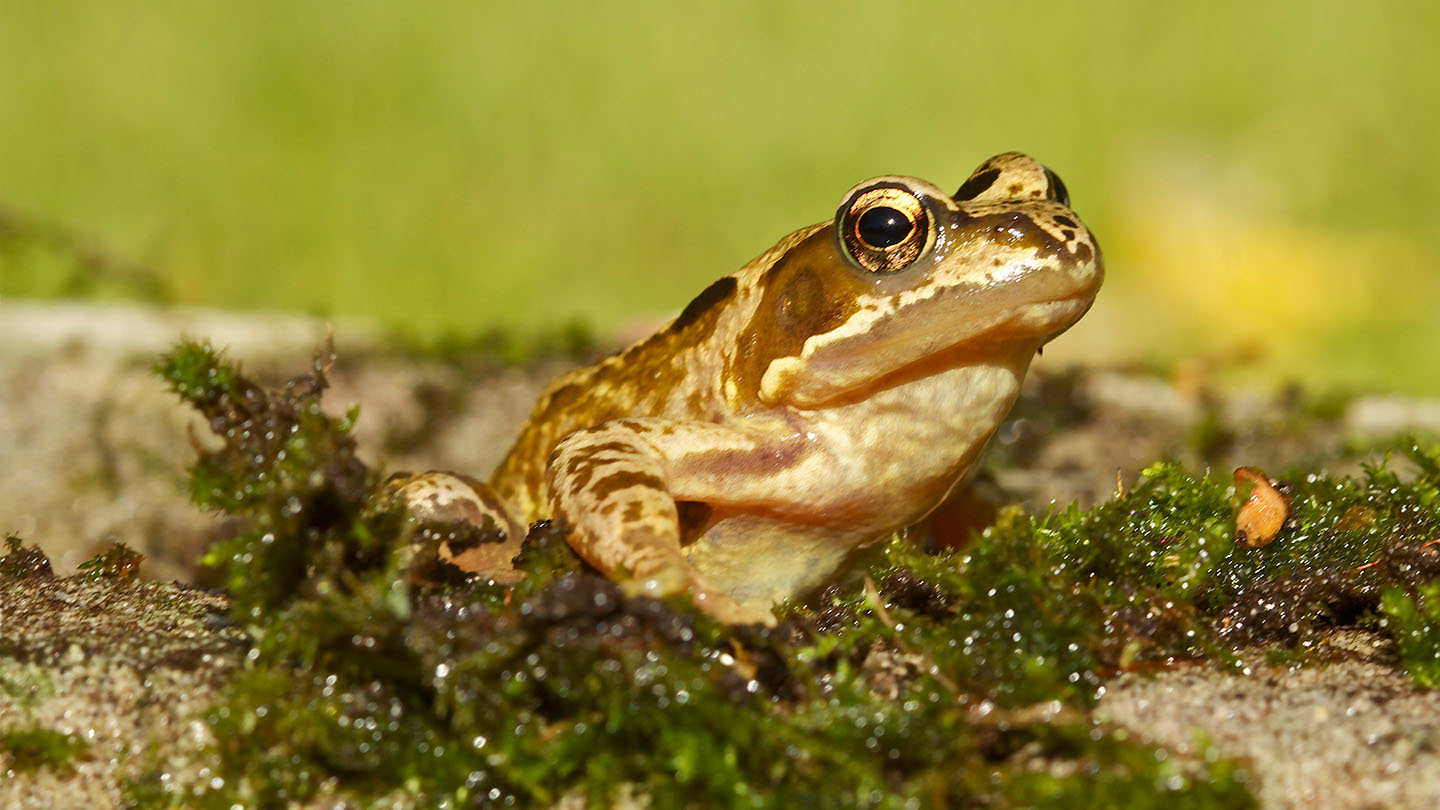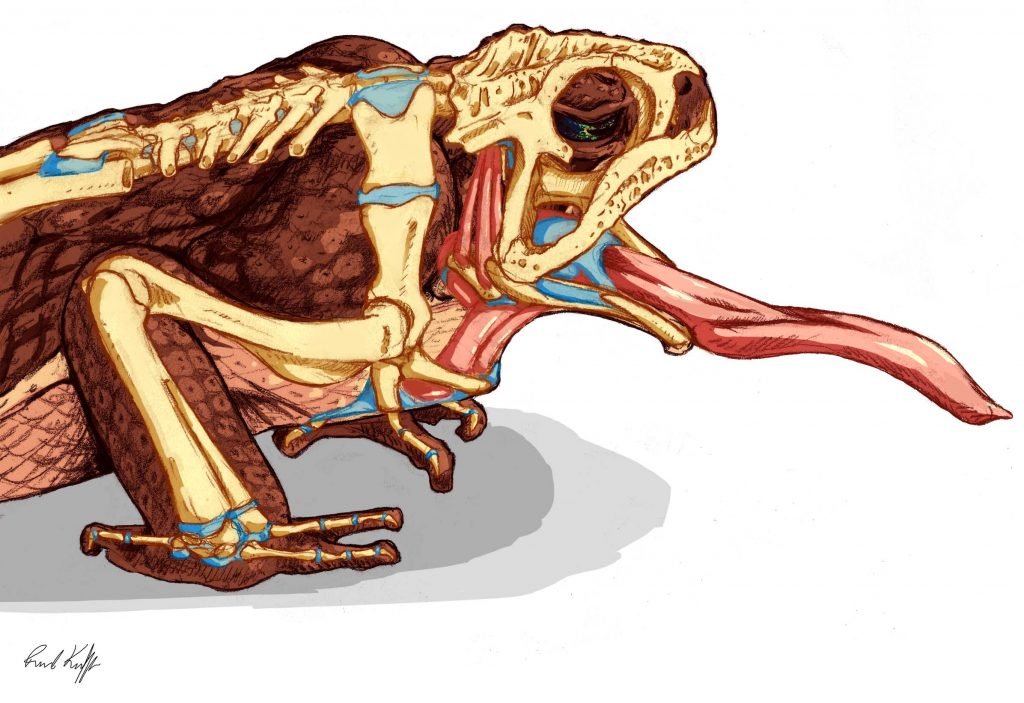Frogs use their eyeballs to swallow by pushing food down into their throat with their eyes. In a fascinating process, frogs eat prey whole, and their eyeballs sink down into their mouth to aid in swallowing food efficiently.
This unique mechanism allows frogs to consume their meals effortlessly. Observing a frog’s feeding behavior can provide insights into their evolutionary adaptations and survival strategies. The coordination between the eyes and the digestive system showcases the remarkable capabilities of these amphibians.
Understanding how frogs swallow food sheds light on their anatomy and physiology, highlighting the interconnectedness of different body parts in their feeding process. This intricate dance between eyes and mouth exemplifies the wonders of nature’s designs.
The Frog Feeding Frenzy
In the captivating spectacle known as the Frog Feeding Frenzy, frogs use their eyes to push food down while swallowing. Their eyes retract towards the esophagus, aiding in the swallowing process, showcasing their unique feeding mechanism.
| Anatomy of a Frog’s Mouth |
| Frogs swallow food using their eyes to push prey down their throat. |
| When frogs eat, their eyes bulge into the mouth, aiding in swallowing. |
| The hyoid shoots up, pressing the tongue against the mouth roof to move food into the esophagus. |
| Frogs eat prey whole, with eyeballs sinking to help push food into the throat. |
The Mechanics Of Frog Swallowing
Frogs have a unique way of swallowing food. When it comes to tongue deployment, they use their long, sticky tongues to catch prey. The saliva plays a crucial role in helping the frog retain its meal. As the frog’s tongue retracts, the sticky saliva keeps the prey in place. Moreover, while swallowing, the frog’s eyes actually retract down towards its esophagus, helping to push the food down their throats. This sticky situation allows the frog to consume its meal effectively, showcasing the fascinating mechanics of frog swallowing.
Eyes As Swallowing Aids
Frogs have a unique way of swallowing their food. Their eyes play a crucial role in the swallowing process. As the frog eats, its eyes actually retract down towards its esophagus. This retraction creates pressure, aiding in the movement of the food down the throat. The eyes of the frog bulge into the mouth when they close, enabling them to help push food down their throats. This fascinating mechanism allows frogs to effectively consume their prey. It’s truly amazing how these creatures utilize their anatomy to facilitate the swallowing of food.
The Hyoid Bone’s Function
The hyoid bone in frogs aids in swallowing by pushing food down the esophagus with the tongue. This bone’s unique motion scrapes food into the throat, allowing frogs to consume prey whole efficiently. Frogs also use their eyes to assist in the swallowing process, showcasing their remarkable adaptation for feeding.
| The Hyoid Bone’s Function |
| The hyoid bone is a unique structure that helps frogs swallow their food. When a frog catches prey, it flicks its sticky tongue out and brings the food into its mouth. The hyoid bone then shoots up and presses the tongue against the roof of the mouth. After this, the hyoid bone moves forward, essentially scraping the food off into the esophagus. This motion may explain the presence of ridges and fangs on the upper palate of some frogs. Additionally, frogs use their eyes to help push the food down their throat. While swallowing, a frog’s eyes actually retract down towards its esophagus, and when they close their eyes, they can be used to help push prey down their throat. |
Digestive Journey Post-swallow
Frogs swallow their food whole and use a unique method to move it down their digestive system. After catching their prey with their long sticky tongue, the frog pulls the food back into their mouth. The hyoid bone then shoots up and presses the tongue against the roof of the mouth. The tongue then moves forward, scraping the food off into the esophagus. Some frogs also have ridges and fangs on their upper palate to assist in this process. Once the food reaches the stomach, it is broken down by acids and enzymes. Frogs rely on their eyes to help push the food down their throat. While swallowing, a frog’s eyes actually retract towards its esophagus, creating pressure to move the food along.
:strip_icc()/frog-540812_1920-5c44db86c9e77c00013c2f1d.jpg)
Credit: www.thesprucepets.com
Adaptations For Different Prey
Frogs have unique adaptations for swallowing food, especially when it comes to varying prey sizes. Despite being toothless, they use their eyes in a fascinating way to aid in swallowing. When capturing prey, frogs use their long tongues and sticky saliva to catch insects, flies, moths, snails, slugs, and worms. As they grow, they transition to feeding on plants and smaller insects. During feeding, the frog’s eyes actually retract down towards its esophagus, helping to push the food down its throat. This process allows them to swallow their prey whole, utilizing their eyes as a mechanism to aid in the swallowing process. Additionally, a study from the Georgia Institute of Technology found that the stickiness of a frog’s eyes also contributes to their ability to hang onto their meal as it is swallowed.
Frog Feeding Through The Ages
Frogs have a unique way of swallowing their food. When they eat, their eyes retract down towards their esophagus, pushing the food down. As tadpoles, they primarily feed on algae, but as they transition into adults, they consume insects and small prey. Using their long tongues and sticky saliva, adult frogs catch their prey whole and then use their eyes to help push the food down their throat. This fascinating feeding behavior is essential for their survival in their natural habitat.

Credit: www.woodlandtrust.org.uk
Scientific Studies And Discoveries
Frogs have a unique way of swallowing food using their eyes to help push prey down their throat. This fascinating mechanism allows them to consume their meals effectively and efficiently. Through a series of eye movements, frogs can aid in the swallowing process, making it a remarkable aspect of their feeding behavior.
|
Recent Research Highlights: Scientists discovered frogs use their eyeballs to swallow food. X-ray insights show the tongue movement and esophagus scraping. Frogs rely on hyoid bone to propel food into their throat. Eyes retract to assist in swallowing. Frogs eat prey whole, aided by eye movements. |
Fascinating Feeding Facts
Frogs have a unique way of swallowing food that sets them apart from other species. When it comes to their feeding behavior, frogs use their eyes to push food down while swallowing. As they close their eyes, the eyes bulge into the mouth and can be used to help push food down their throats. Additionally, the hyoid shoots up and presses the tongue against the roof of the mouth, essentially scraping the food off into the esophagus. Moreover, eliminating the ability of the eyes to retract down towards the esophagus affects the frog’s swallowing mechanism. This distinct feeding method showcases the fascinating and unusual feeding behaviors of frogs compared to other species.

Credit: www.newscientist.com
Frequently Asked Questions
Do Frogs Use Eyes To Swallow?
Frogs use their eyeballs to help swallow food, as their eyes sink down into their mouth and push the food into their throat.
How Does The Frog Swallow His Meal?
Frogs use their eyeballs to push food down into their throat, swallowing prey whole.
Do Frogs Swallow Their Food Whole?
Frogs swallow their food whole using their eyeballs to push it down into their throats.
How Do Frogs Intake Food?
Frogs use their eyes to swallow food. When eating, their eyes retract down towards the esophagus, pushing the food down.
Conclusion
Frogs’ unique ability to swallow food using their eyes showcases their fascinating feeding mechanism. Their eyeballs play a crucial role in pushing food down their throats, making the process both intriguing and efficient. Understanding how frogs swallow food sheds light on the wonders of nature’s design.
